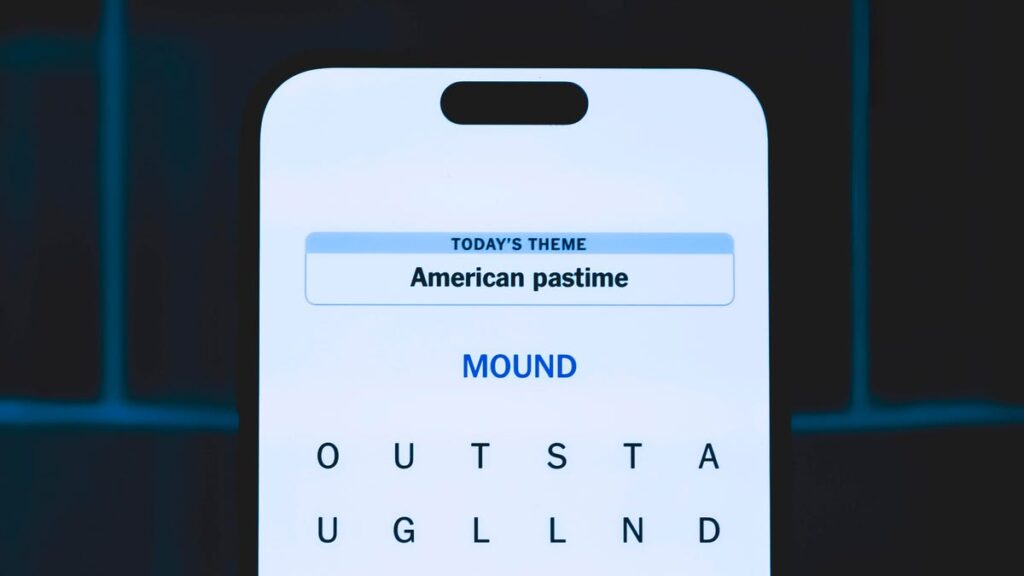
For puzzle enthusiasts and aspiring chefs alike, today’s New York Times Strands puzzle offers a culinary-themed challenge. The puzzle, known for its engaging wordplay and thematic depth, presents the theme “Chef’s Special” for August 9, 2025. As players navigate through the clues, they’ll find themselves immersed in a kitchen-inspired word hunt.
The announcement comes as part of the New York Times’ daily puzzle offerings, which include popular games like the Mini Crossword, Wordle, and Connections. These puzzles have become a staple for many, providing both entertainment and a mental workout.
Understanding the Strands Puzzle
Strands, a lesser-known yet intriguing puzzle, challenges players to uncover words related to a specific theme. The objective is to find hidden words that fit the theme, with the added twist of revealing a “spangram” — a word that stretches across the puzzle from one side to the other. Today’s spangram, “KITCHENTOOL,” encapsulates the culinary theme perfectly.
According to puzzle experts, the key to mastering Strands lies in identifying words of four letters or more. For every three such words found, a theme word is revealed, aiding players in completing the puzzle. Words like “ROACH,” “TOOL,” and “CLUE” serve as stepping stones to uncovering the thematic answers.
Today’s Strands Answers
For those seeking a little extra help, the answers for today’s puzzle are as follows: “MIXER,” “SIEVE,” “WHISK,” “ZESTER,” “SPATULA,” and “CORKSCREW.” These words reflect common kitchen tools, aligning seamlessly with the “Chef’s Special” theme.
Meanwhile, the spangram “KITCHENTOOL” can be discovered by tracing a path starting from the “K” located two letters to the right on the top row of the puzzle grid.
The Challenge of Strands
While today’s puzzle may be approachable for many, Strands has a reputation for presenting formidable challenges. In recent weeks, themes such as “Dated slang” and “Thar she blows!” have tested even the most seasoned players. The toughest words from these puzzles, like “PHAT” and “BALEEN,” highlight the diversity and complexity of the Strands experience.
According to sources familiar with puzzle design, the difficulty of Strands lies in its thematic depth and the requirement for a broad vocabulary. This makes it a favorite among word game aficionados who relish a good challenge.
The Rise of Puzzle Culture
The popularity of puzzles like Strands reflects a broader trend in the digital age: the resurgence of puzzle culture. As people seek out new ways to engage their minds and relax, puzzles offer a perfect blend of challenge and entertainment. The New York Times has capitalized on this trend, expanding its puzzle offerings and attracting a dedicated following.
Experts suggest that puzzles provide cognitive benefits, such as improved memory and problem-solving skills. This has led to a growing interest in puzzles as a form of mental exercise, akin to physical workouts for the brain.
“Puzzles are more than just games; they’re a way to keep the mind sharp and engaged,” says Dr. Emily Carter, a cognitive psychologist specializing in recreational activities.
Looking Ahead
As the New York Times continues to innovate and expand its puzzle offerings, players can look forward to more themed challenges and engaging wordplay. The Strands puzzle, with its unique approach and thematic depth, is likely to remain a favorite among puzzle enthusiasts.
For those eager to tackle the next challenge, staying updated with daily hints and answers can provide the edge needed to conquer even the toughest puzzles. As the puzzle community grows, so too does the anticipation for each new thematic adventure.
In the meantime, today’s “Chef’s Special” invites players to don their metaphorical aprons and dive into a world of culinary wordplay, proving once again that puzzles are a recipe for fun and mental agility.





